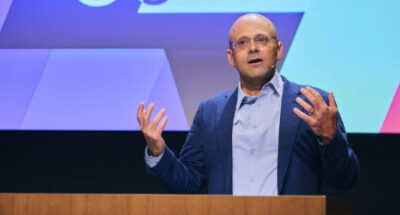Ambidexterity calls for the ability to drive flawless execution, replicating best-in-class routines, while at the same time being able to let go of these routines in order to experiment. For stakeholders, ambidextrous leaders know how to follow formal procedures for dealing with them, but they also possess the capacity to work the informal network to achieve mutual goals. When managing people, ambidextrous leaders have both the capacity to lead from the front, telling their people what to do, but also to step back and act as a coach. And for leading self, ambidextrous leaders have the capacity to make big courageous leaps, while also having the ability to put themselves back in an equilibrium to find their quiet center.
Becoming ambidextrous
The vast majority of the leaders who we have studied achieved ambidexterity on some, but not all, dimensions; only 10% of them mastered ambidexterity across all five. And it was the latter group that was truly able to optimize their businesses of today while building powerful businesses for tomorrow. The good news is that ambidexterity can be developed. It starts with self-awareness about your cognitive and behavioral style.
Here, we recommend 360-degree behavioral feedback on each of the five dimensions, and the behaviors associated with each, to provide a list of opportunities for you to become more ambidextrous. Next, we ask you to reflect on the feedback and your behavior patterns.
Are you perceived not to be ambidextrous simply because you have operated in an environment where there was no opportunity to showcase such behaviors? Or perhaps it is linked to your personal style: do you not enjoy the uncertainty associated with big transformations or experimentation? Or is it the lack of underlying abilities to engage in some of the opposing behaviors listed above?
Once this analysis is completed, you are ready to take action. If it’s simply a question of environmental conditions, we ask that you work hard to change your role. A shift from a deep operational role to one squarely focused on transformation will allow others to see your true skills and allow you to exercise your “transformational muscle”.
Deep coaching
If it’s your personal preferences that stand in the way of ambidexterity, you might want to consider a deep coaching engagement. This will allow you to identify the origin of certain behaviors and pinpoint any fears you might have, and spot opportunities to approach these behaviors differently. If it’s a lack of skills in engaging in opposing behaviors, we recommend going back to school; by now every respectable business school has a course that will accelerate your ability to become a better networker with-out sacrificing your ability to follow protocol, or a better coach without losing your skill to drive from the front.
In no time, your ambidexterity will improve. Join us in December for an exploration of leadership progression in Issue #04 of the magazine I by IMD.







 Audio available
Audio available